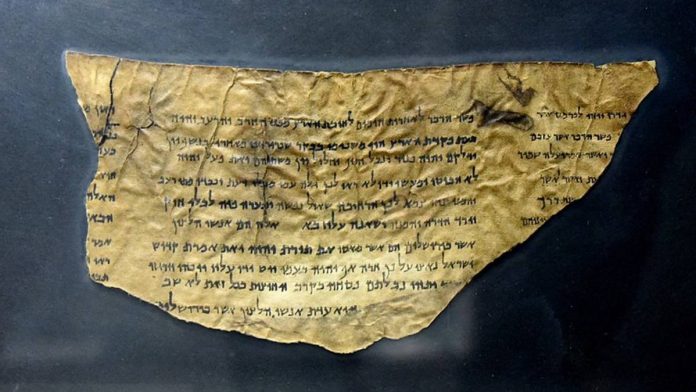The discovery of the Dead Sea Manuscripts between 1947 and 1956 was an event that ushered in a new era of Bible study, early post-biblical Judaism, and the beginning of Christianity. Written in Hebrew and Aramaic and dating from 200 BC. until the middle of the first century AD, they allowed an incomparable and revolutionary view of Jewish life and worldview in Palestine during a fateful period in the development of Jewish and Christian religious thought. With their first publication in 1962 and the revised 1975 edition, these unbiblical Qumran texts became an accessible and convenient introduction to the organization, customs, history, and beliefs of the municipality that created them. These remarkable documents serve as an authoritative guide in the study of ancient Judaism and the nascent Christianity of the same period.
The hiding places with manuscripts found in the caves near the Dead Sea, near Ain al-Feshka and Hirbet-Qumran, were hidden by the members of the New Union (ancient Hebrew Hadasha), as the people living in a separate and special a religious community built on the principles existing in the ancient Jewish sect of the Essays. When the Roman legions of Emperor Titus quelled the Israeli riots in Palestine (c. 66-70), the Qumranites left their refuges and hid their library in nearby caves. Pliny the Elder (23-79), who was a senior officer at the imp. Titus, who in his “Natural History” described the geography of Palestine and some cultural and historical facts and manifestations of that country; he tells us that in his time west of the Dead Sea lived wonderful Jewish ascetics: “… west of Lake Asphalt are the Essayists … These are people of their kind; without a wife, in denial of all that is the fruit of Venus; no money … Day by day they are reborn in equal numbers thanks to the multitude that comes; for there are many who are tired of life (want) to adopt their way of life ”(Historia naturalis V, 17). The members of this secluded Jewish colony, which flourished in the first century AD, are also called essays by Dion Chrysostom (c. 40-120), a Greek rhetorician and philosopher with a penchant for the Stoics and Cynics. Bishop Synesius (370-413), who was also a rhetorician, philosopher and poet, quoted Chrysostom Dion as follows: , in the middle of Palestine, not far from Sodom ”.
The Essenes lived mainly in Judea, but their influence extended beyond its narrow confines. Philo of Alexandria tells us about the echo of essayism in Mesopotamia and especially in Egypt (Alexandria). The inspiration for this mystical Jewish brotherhood with a Pythagorean backing was inspired by the Master of Justice (founder of the New Union or Qumran society), who integrated neo-Pythagoreanism into the Essay because he could not remain alien to the reviving Pythagoreanism that covered almost all of then. His followers for three centuries (2nd century BC – 1st century AD) numbered more than 4,000, and only the truly dedicated, perfect, “society of priests”, not counting the members of the community who joined the the union following the example of the “pious”. The name “essays” comes from the East Aramaic word “hasse” = pious, holy, dedicated; st. abs. pl. “Hassen”; st. constr. pl. – hassaja ”, whence the Greek“ essei ”. The fact that this Hebrew word is not found in the West Aramaic language is an indication that the ideological origin of this sect should be sought in the Jewish colonies of Mesopotamia, from where the Iranian-Babylonian influences were transferred to Palestine.









